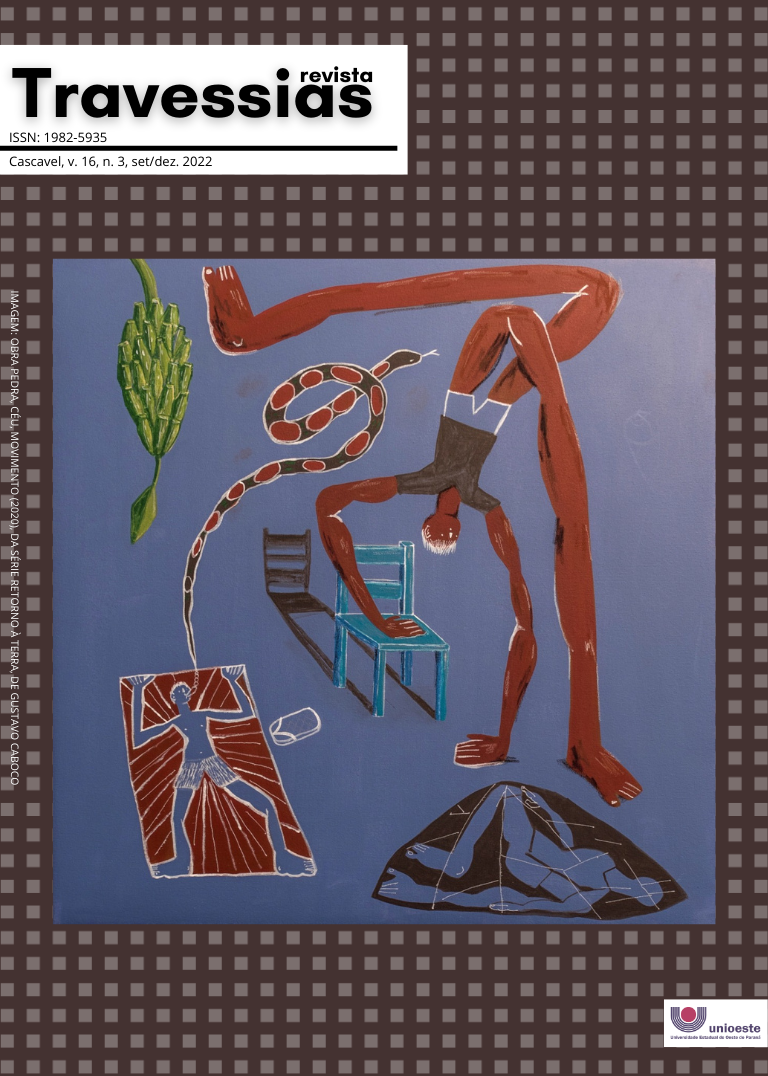Music and aesthetics and the teaching of art
DOI:
https://doi.org/10.48075/rt.v16i3.29509Keywords:
Art, song, aesthetics, educationAbstract
Music is one of the artistic expressions most used by men and enters various social spaces. But do the songs available – in the media and on the internet – for the population, contribute to developing the aesthetic feeling? The purpose of this text is to demonstrate that music in capitalist society has contributed to making man's thinking fragmented and standardized, but it also has a formative potential to develop the aesthetic feeling, being a factor in the transformation of consciousness. The methodology is qualitative research based on a bibliographic study of the authors of Critical Theory who analyze the man historically situated in capitalist society. It highlights the (de)formative potential of music in capitalist society, as well as the importance of philosophy and aesthetics for the formation of human psychic potential. In this context, the school is the privileged place that enables an education that elevates the students' thinking to higher levels, presenting the constitutive elements of aesthetic expression in the process of cultural formation of today's society. Therefore, it is necessary that teachers have knowledge of this reality and make the contrast in the classroom with theory, thinking differently from what exists. In the end, it is concluded that Art – and in it the music – enables the reflection and realization of human feelings that are often subject to conceptual symbolization, being a way of awakening in the individual other ways of thinking.
Downloads
References
ADORNO, T. W. Crítica Cultural y Sociedad. Barcelona: Edições Ariel, 1969.
ADORNO, T. W. Teoria Estética. Frankfourt: Edições 70, 1970.
ADORNO, T. W. Sociologia. In: COHN, G. (org.). Coleção Grandes Cientistas Sociais. São Paulo: Ática, 1986a. p. 81-98.
ADORNO, T. W. Sobre Música Popular. In: COHN, G. (org.). Coleção Grandes Cientistas Sociais. São Paulo: Ática, 1986b. p. 115-146.
ADORNO, T. W. O Fetichismo na Música e a Regressão da Audição. In: HORKHEIMER, M.; ADORNO, T. W. Textos Escolhidos. São Paulo: Nova Cultural, 1991. p. 79-185.
ADORNO, T. W. Filosofia da Nova Música. São Paulo: Perspectiva, 2007.
ADORNO, T. W. Dialética Negativa. Rio de Janeiro: Jorge Zahar, 2009.
ADORNO, T. W. Introdução à Sociologia da Música. São Paulo: Unesp, 2011.
BEYER, E. A abordagem Cognitiva em Música: uma Crítica ao Ensino da Música, a partir da Teoria de Piaget. Porto Alegre: Mediação,1988.
DUARTE, N.; FONTE, S. S. D. Arte, Conhecimento e Paixão na Formação Humana: Sete Ensaios de Pedagogia Histórico-Crítica. Campinas, SP: Autores Associados, 2010.
ENGELMANN, A. A. Filosofia da Arte. Curitiba: Ibpex, 2008.
FABIANO, L. H. Adorno, Arte e Educação: Negócio da Arte como Negação. Educ. Soc., Campinas, v. 24, n. 83, p. 495-505, ago. 2003.
MARCUSE, H. A Dimensão Estética. São Paulo: Martins Fontes, 1977.
SPONVILLE, A. C. Dicionário Filosófico. São Paulo: Martins Fontes, 2003.
VYGOTSKY, L. S. Psicologia Pedagógica. Tradução de Paulo Bezerra. São Paulo: Martins Fontes, 2001.
VYGOTSKY, L. S. La Imaginación y el Arte en la Infancia. 6. ed. Madri: Akal, 2006.
Downloads
Published
How to Cite
Issue
Section
License
Copyright (c) 2022 Authors keep the copyright and grant the journal the right of first publication, with the work simultaneously licensed under the Creative Commons Attribution License (CC-BY-NC-SA 4.0), which allows sharing the trial with acknowledgment of authorship and initial publication in this journal.

This work is licensed under a Creative Commons Attribution-NonCommercial-ShareAlike 4.0 International License.
Creative Copyright Notice
Policy for Free Access Journals
Authors who publish in this journal agree to the following terms:
1. Authors keep the copyright and grant the journal the right of first publication, with the work simultaneously licensed under the Creative Commons Attribution License, which allows sharing the trial with acknowledgment of authorship and initial publication in this journal.
2. Authors are authorized to take additional contracts separately, for non-exclusive distribution of the work version, published in this journal (eg publish in institutional repository or as a book chapter), with acknowledgment of authorship and initial publication in this journal.
3. Authors are allowed and encouraged to publish and distribute their work online (eg in institutional repositories or on their personal page) at any point before or during the editorial process, as this can generate productive changes, as well as increase both impact and citation of the published trial (See The Effect of Free Access).
Creative Commons License
This work is licensed under a Creative Commons Attribution–NonCommercial-shareaswell 4.0 International License, which allows you to share, copy, distribute, display, reproduce, completely or part of the work, since there is no commercial purpose, and authors and source are cited.



